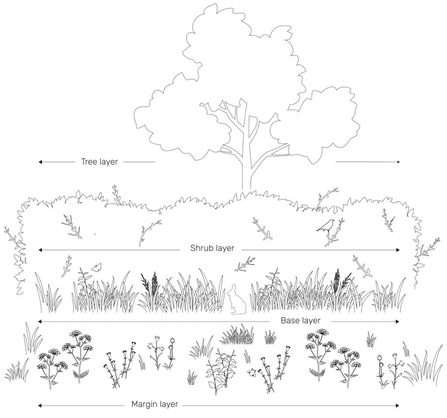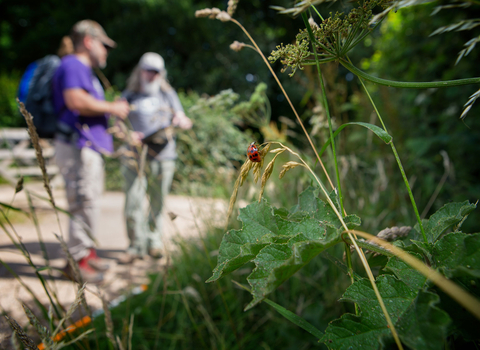Layers of life
A healthy hedgerow is a dynamic and diverse habitat made up of different structural components that together support a variety of priority species throughout their lifecycle.
Shrub layer
This is characterised as the woody component of a hedge which is typically less than 4m in height. It should be comprised of different multi-stemmed, much branched and dense native shrubs and young trees. Species include Hawthorn, Blackthorn, Field maple, Hazel, Bramble and Dog rose.
Tree layer
This woody layer of the hedge is typically over 4m in height but can also include shorter pollards and coppice stools. Mature, isolated trees should be encouraged within a hedgerow. Older trees and those with veteran features such as deadwood, splits and rot holes are particularly important for wildlife, providing habitat for invertebrates, roosting bats and nesting birds.
The tree layer of hedgerows is typically represented by species such as Oak, Beech, Rowan and Crab apple.
Hedge margin
This can include grass buffer strips, arable conservation headlands and field margins.
hedge base
Beneath the canopy of the shrub and tree layer is the bare or densely vegetated ground.


